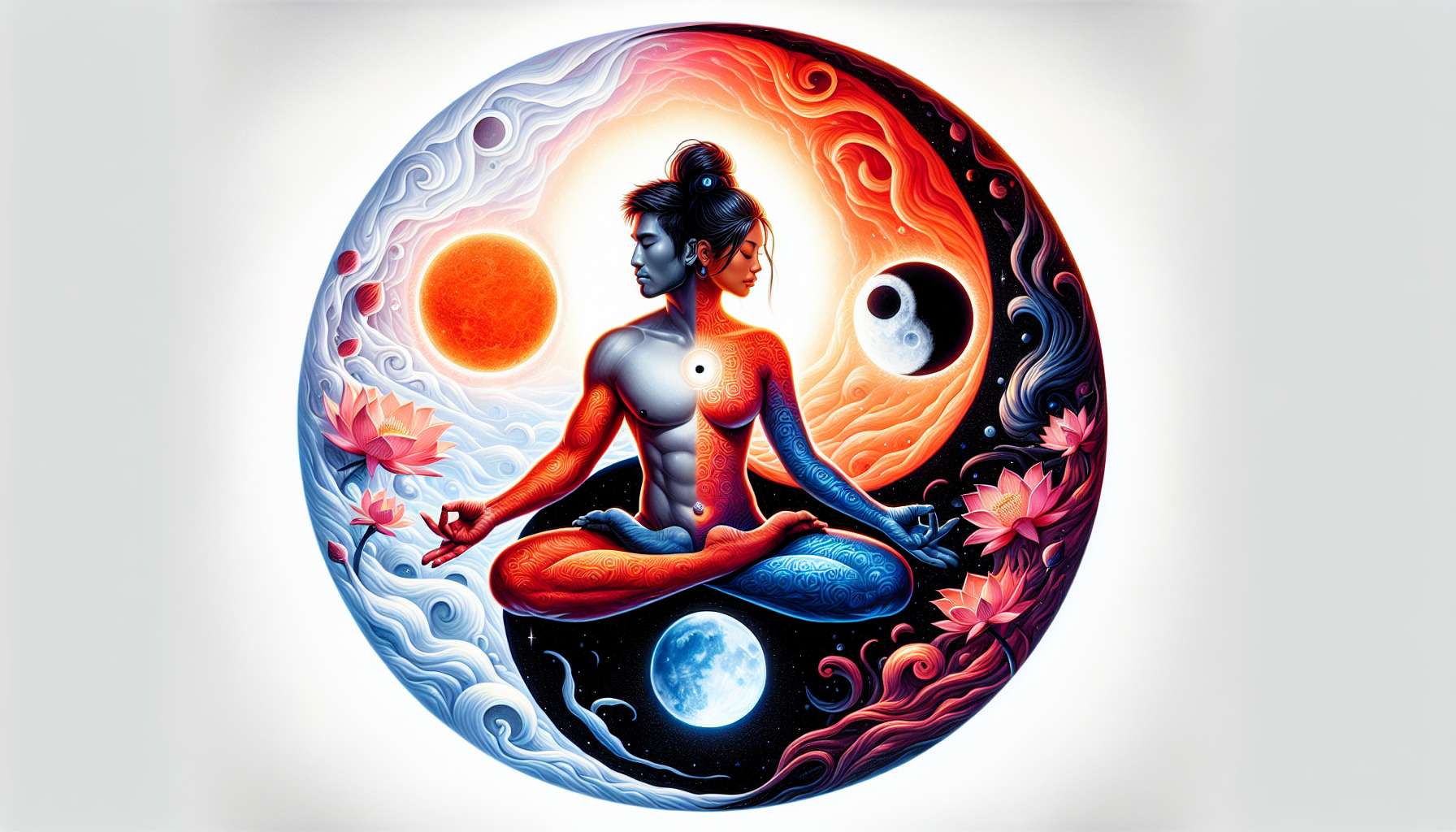Differences between Feminine and Masculine Energy
Feminine and masculine energy are two complementary polarities present in each of us, regardless of our gender. Although connected and inseparable, they have distinct qualities and modes of expression that it is important to understand to better harmonize them within oneself.
Masculine energy is often associated with qualities like action, determination, focus. This is an energy that goes outwards, seeking to act on the world, to achieve goals. It is linked to the mind, to logical and analytical thinking. In the body, it is associated with the upper part, especially the head and shoulders. Its natural movement is upwards and forward.
Conversely, feminine energy is more directed inwards, towards being rather than doing. This is an energy of receptivity, acceptance, listening. It is related to intuition, emotions, senses. In the body, it is associated with the pelvis, the lower part of the body. Its natural movement is downwards and backwards, towards the depths of the self.
Whereas masculine energy is solar, radiant, extroverted, feminine energy is lunar, mysterious, introverted. One seeks light, the other delights in the fertile darkness from which all life springs. One is associated with day, linear time, the other with night, cycles.
In Chinese tradition, these two energies are represented by Yin and Yang. Yang is the masculine principle, associated with heat, dryness, movement. Yin is the feminine principle, associated with cold, moisture, stillness. The ideal is for these two forces to be balanced, as symbolized by the famous black and white circle where each part contains a droplet of the other.
When this balance is disrupted, one sees excesses of one or the other polarity. An excess of masculine energy not tempered by the feminine can lead to aggressiveness, overwork, stress. Conversely, an excess of feminine energy not channeled by the masculine can lead to passivity, procrastination, stagnation.
In our modern societies marked by the cult of performance and speed, it is often masculine energy that is overvalued at the expense of the feminine. Men and women alike are asked to be strong, quick, efficient, at the risk of cutting them off from their sensitivity and inner selves. Rebalancing these energies is therefore a personal and collective issue.
In practice, nourishing one’s feminine energy can be achieved through practices like meditation, gentle yoga, intuitive dance. It also involves allowing for moments of rest, daydreaming, contemplating nature. Cultivating masculine energy can be done through sport, martial arts, setting goals and their methodical achievement.
The idea is not to deny part of oneself but rather to fluidify the transition from one to the other. Thus, one can alternate between times of action and times of rest, moments of expression and moments of listening. In a couple, this allows for a more harmonious relationship where each can take turns supporting and being supported, giving and receiving.
At the spiritual level, the union of the feminine and masculine within oneself is the key to awakening and wholeness. In tantra, the shakti, feminine energy, unites with the shiva, masculine consciousness, to reach mystical ecstasy. In alchemy, it is the meeting of sulfur and mercury that results in the philosophal stone, a symbol of immortality and wisdom.
Each tradition has its own symbols and practices to evoke and honor this sacred union within oneself. But all agree on one point: it is by embracing the totality of our being, in its feminine and masculine parts, in its light and shadow, that we can reach our full potential and shine in the world.
Key takeaways:
– Feminine and masculine energy are two complementary polarities present in each individual, regardless of gender. Although connected, they have distinct qualities and modes of expression.
– Masculine energy is associated with action, determination, the mind, logical thinking. It is extroverted, solar and its movement goes upwards and forward.
– Feminine energy is associated with receptivity, intuition, emotions, senses. It is introverted, lunar and its movement goes downwards and backwards, towards the interior.
– In Chinese tradition, Yang represents the masculine principle (heat, dryness, movement) and Yin the feminine principle (cold, moisture, stillness). The balance between the two is symbolized by the Yin-Yang circle.
– An imbalance between these energies can lead to excesses: aggressiveness and stress for an excess of masculine, passivity and stagnation for an excess of feminine.
– Our modern societies often overvalue masculine energy at the expense of the feminine. Rebalancing these energies is a personal and collective issue.
– Nourishing one’s feminine energy involves meditation, gentle yoga, contemplation. Cultivating masculine energy involves sports, martial arts, setting and achieving goals.
– The idea is to fluidify the transition between the two energies, alternating between times of action and rest, expression and listening.
– At the spiritual level, the inner union of the feminine and masculine is the key to awakening and completeness, as touched upon by tantra or alchemy.
– Embracing the totality of our being, in its feminine and masculine parts, allows us to reach our full potential.
👉 To download docx (Editable) file click here : Click here
👉 To download PDF file click here : Click here
👉 To download MP3 file click here : Click here







